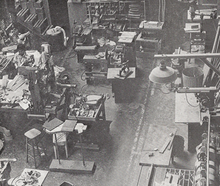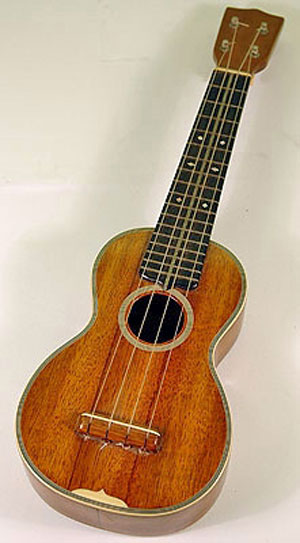
The ukulele, also called a uke, is a member of the lute family of instruments of Portuguese origin and popularized in Hawaii. It generally employs four nylon strings.
The music of Hawaii includes an array of traditional and popular styles, ranging from native Hawaiian folk music to modern rock and hip hop. Styles like slack-key guitar are well known worldwide, while Hawaiian-tinged music is a frequent part of Hollywood soundtracks. Hawaii also made a contribution to country music with the introduction of the steel guitar. In addition, the music which began to be played by Puerto Ricans in Hawaii in the early 1900s is called cachi cachi music, on the islands of Hawaii.

Keola Beamer is a Hawaiian slack-key guitar player, best known as the composer of "Honolulu City Lights" and an innovative musician who fused Hawaiian roots and contemporary music. Keola Beamer descends from one of Hawaii's most respected musical families.

Philip Kunia Pahinui, known as Gabby Pahinui, was a slack-key guitarist and singer of Hawaiian music.

Slack-key guitar is a fingerstyle genre of guitar music that originated in Hawaii. Nearly all slack key requires retuning the guitar strings from standard (EADGBE), and this usually means lowering or "slacking" several strings. The result will most often be an open major chord, although it can also be a major-seventh chord, a sixth, or (rarely) a minor. Different tunings were once guarded fiercely and passed down as family secrets.
The Grammy Award for Best Hawaiian Music Album was an honor presented to recording artists from 2005 to 2011 for quality Hawaiian music albums. The Grammy Awards, an annual ceremony that was established in 1958 and originally called the Gramophone Awards, are presented by the National Academy of Recording Arts and Sciences of the United States to "honor artistic achievement, technical proficiency, and overall excellence in the recording industry, without regard to album sales or chart position".

The Hawaiian Renaissance was the Hawaiian resurgence of a distinct cultural identity that draws upon traditional kānaka maoli culture, with a significant divergence from the tourism-based culture which Hawaiʻi was previously known for worldwide. The Hawaiian Renaissance has been pointed to as a global model for biocultural restoration and sustainability.
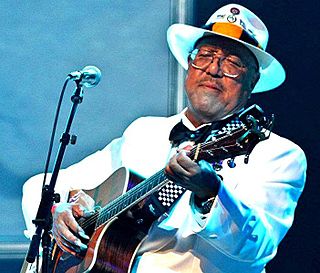
Dennis David Kahekilimamaoikalanikeha Kamakahi was a Hawaiian slack key guitarist, recording artist, music composer, and Christian minister. He was a three-time Grammy Award winner, and in 2009 he was inducted into the Hawaiian Music Hall of Fame.
Leonard Keala Kwan Sr (1931-2000) was one of the most influential Hawaiian slack-key guitarists to emerge in the period immediately preceding the Hawaiian Cultural Renaissance of the 1970s. He made the first LP of slack key instrumentals, co-wrote the second slack key instruction book, and composed a number of pieces that have become part of the standard repertory. Most players will include Kwan, along with Gabby Pahinui, Sonny Chillingworth, and Atta Isaacs, on a list of the most significant players of the older generation.
Ozzie Kotani is a slack-key guitar player and a well-respected teacher, arranger, solo performer and accompanist.

Kamaka Hawaii, Incorporated, also known as Kamaka Ukulele or just Kamaka is a family-owned Hawaii-based maker of ukuleles. It is often credited with producing some of the world's finest ukuleles, and created the first pineapple ukulele. The company manufactures 9 types of ukulele.

The Brothers Cazimero were a Hawaiian musical duo made up of Robert Cazimero on bass and Roland Cazimero on twelve string guitar. Robert also played piano as a solo musician. The Cazimeros got their start during the Hawaiian Renaissance with ukulele and slack-key guitarist Peter Moon's band, The Sunday Manoa, on their first recording, Guava Jam. Since that time, The Brothers Cazimero have released at least 36 recordings and three DVDs. For three decades, the group performed at the annual Lei Day Concert. They made their Carnegie Hall debut in 1989.
Stephen M. Sano is Professor of Music, the Harold C. Schmidt Director of Choral Studies, and the Rachford & Carlota A. Harris University Fellow in Undergraduate Education at Stanford University. Using the name Steve Sano, he is also an accomplished kī hō'alu, or slack-key guitar, player.

The Hawaiian Music Hall of Fame is an organization dedicated to recognizing the cultural importance of the music of Hawaii and hula. Established in 1994, the Hawaiian Music Hall of Fame promotes the appreciation and preservation of Hawaiian culture through educational programs and annual inductions honoring significant individuals, groups, institutions, chanters and songs.

Haili Church Choir was established in 1902, and is affiliated with Haili Church in Hilo, on the island of Hawaii, in the U.S. state of Hawaii. In 2001, the choir was inducted into the Hawaiian Music Hall of Fame in recognition of its promoting and developing music endemic to the Hawaiian culture. Several members of the choir have gone on to achieve commercial and cultural success in the genre of Hawaiian music.

Winona Kapuailohiamanonokalani Desha Beamer was a champion of authentic and ancient Hawaiian culture, publishing many books, musical scores, as well as audio and video recordings on the subject. In her home state, she was known as Auntie Nona. She was an early proponent of the ancient form of the hula being perpetuated through teaching and public performances. Beamer was the granddaughter of Helen Desha Beamer. A cousin to Hawaiian Music Hall of Fame inductee Mahi Beamer, she teamed with him and her cousin Keola to form a touring North American troupe performing ancient hula and the Hawaiian art of storytelling. She was a teacher at Kamehameha Schools for almost 40 years, but had been expelled from that same school as a student in 1937 for dancing the standing hula. Beamer's sons Keola and Kapono are established performers in the Hawaiian music scene. Her grandson Kamanamaikalani Beamer is a professor at the University of Hawaii at Manoa and CEO of the Kohala Center. She ran a Waikiki hula studio for three decades. In 1997—indignant at proposals to cut Hawaiian curriculum from Kamehameha Schools—Beamer became the catalyst for public protest and legal investigation into Bishop Estate management, which eventually led to the removal or resignation of the trustees.
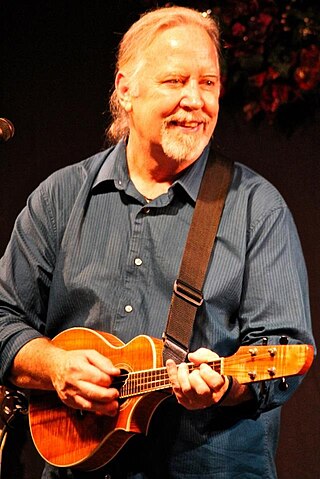
Bill Griffin is widely known as a musician in both bluegrass and Hawaiian music genres. A luthier and veteran mandolinist, he is also the inventor of the "mandolele", which is a nylon-stringed mandolin that he first crafted in 1986. Born in Glendale, California, Griffin's first exposure to music came through his father, a pianist in a Dixieland jazz band. Griffin began playing ukulele at age five, guitar soon thereafter, and mandolin at age nineteen. He also plays piano and bass.
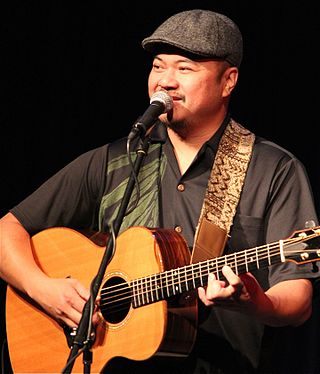
Patrick Landeza is a contemporary Hawaiian slack key guitarist. He is the first mainland-born Hawaiian to win a Nā Hōkū Hanohano music award. He was born in Berkeley, California on June 23, 1972.

The Dillingham Transportation Building was built in 1929 for Walter F. Dillingham of Honolulu, Hawaiʻi, who founded the Hawaiian Dredging Company and ran the Oahu Railway and Land Company founded by his father, Benjamin Franklin Dillingham. The building was designed in an Italian Renaissance Revival by architect Lincoln Rogers of Los Angeles, who also designed the Hawaii State Art Museum (1928). It was added to the National Register of Historic Places in 1979 and restored by Architects Hawaiʻi Ltd. in 1980.
The Descendants (Music from the Motion Picture) is the soundtrack to the film The Descendants, released, three days before the film on November 15, 2011 by Sony Classical Records. The film uses Hawaiian music, featuring artists including Gabby Pahinui, Ray Kane, Keola Beamer, Lena Machado, Sonny Chillingworth, Jeff Peterson, Makana, Dennis Kamakahi, and Danny Carvalho. The soundtrack was acclaimed by music critics for its use of Hawaiian music and received a nomination for Grammy Award for Best Compilation Soundtrack for Visual Media at the 55th Annual Grammy Awards.
